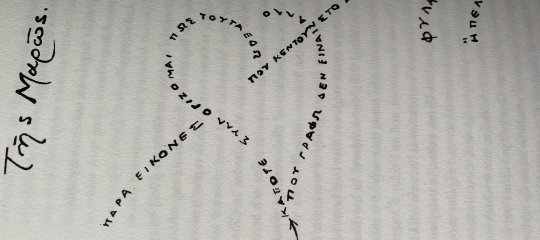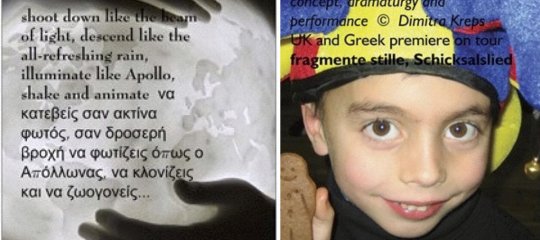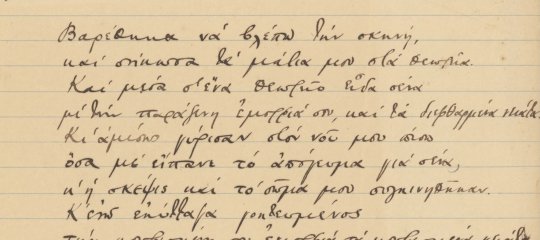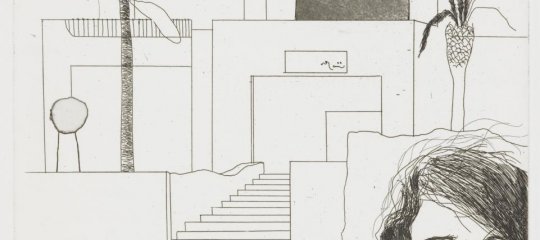Τα διδακτικά εγχειρίδια
«Επικοινωνήστε ελληνικά»: σημεία που παρουσιάζουν κάποια προβλήματα. Το εγχειρίδιο που χρησιμοποιώ ως βάση είναι το «επικοινωνήστε ελληνικά». Γενικώς με αυτό δουλεύουμε καλύτερα απ’ ό,τι με το προηγούμενο (πέρσι είχαμε αρχίσει με το 1+1) και οι φοιτητές οι ίδιοι το προτιμούν. Έχει καλή σειρά, δεν αναμειγνύει πολλά θέματα στην ίδια ενότητα, είναι εύληπτο, έχει ποικιλία ασκήσεων καθώς και αρκετές που απαιτούν μια πιο ουσιαστική συμμετοχή του σπουδαστή και ομαδική δουλειά, ακόμη και η συνοδευτική κασέτα είναι πιο καλοφτιαγμένη, αν και πραγματικά καλή κασέτα δεν έχω ακούσει ακόμη, απλώς, στις κασέτες άλλων εγχειριδίων η εκφορά του λόγου στους διαλόγους μοιάζει απελπιστική έως γελοία μερικές φορές. Μία από τις ελλείψεις του αφορά τα ρήματα. Στο τέλος του πρώτου και του δεύτερου τόμου υπάρχουν συγκεντρωτικοί πίνακες γραμματικής για τα ουσιαστικά και τα επίθετα, αλλά όχι για τα ρήματα. Επίσης, ο τρόπος που δίνεται ο Μέλλοντας και ο Αόριστος στις ενότητες 15, 16 και 20 του πρώτου τόμου και 1 και 2 του δεύτερου δεν βοηθά τον σπουδαστή να καταλάβει τι γίνεται με τον σχηματισμό τους και πελαγώνει. Δίνονται σε πίνακες ρήματα που χρησιμοποιούνται συχνά, χωρίς να υπάγονται σε καμία κατηγοριοποίηση. Πχ: στο «εε 1» - ενότητα 15, Μέλλοντας Στιγμιαίος: δίνονται διάφορα ρήματα, με διαφορετικό χαρακτήρα, που απλώς άλλα κάνουν σε -σω, άλλα σε –ψω κι άλλα σε –ξω. Επίσης ο Στ. Μέλλοντας μερικών ρημάτων, που έχουν ένα μόνον τύπο, τον ίδιο για τον Εξακ. και για τον Στ. Μέλλοντα (είμαι, έχω, κάνω, ξέρω, περιμένω), χωρίς να έχει γίνει διάκριση στη χρήση των δύο χρόνων, ενώ μαζί τους δίνεται και το πάω /πηγαίνω – θα πάω, το οποίο όμως έχει διαφορετικό τύπο για τον Εξακολ. Μέλλοντα. - ενότητα 16: δίνεται ο απλός Μέλλοντας ενρινόληκτων, υγρόληκτων, ανώμαλων ρημάτων αδιακρίτως, πχ πλένω, φέρνω, φεύγω, δίνω. Δίνεται επίσης και ο Μέλλοντας των ρημάτων της Β΄ συζυγίας, αλλά για το ίδιο θέμα υπάρχει ένας καλύτερος πίνακας στο «ξέρετε ελληνικά» (μάθημα 46, σελ. 283). - ενότητα 20: δίνεται ο Αόριστος, σε – σα ή άσιγμος, ομαλών (διαφόρων κατηγοριών) και ανωμάλων ρημάτων (είμαι, αγοράζω, μαγειρεύω, περιμένω, μένω, τρώω, πίνω, κ.α., και μαζί το έρχομαι) στο «εε 2» - ενότητα 1: Προστακτική απλή, Αορίστου, ρήματα Α΄ και Β΄ συζυγίας, ομαλά και ανώμαλα (μαγειρεύω, ανοίγω, μιλάω, οδηγώ, παίζω, δίνω, λέω, μπαίνω, ..έρχομαι και κάθομαι) - ενότητα 2: Αόριστος σε –σα, -ψα, άσιγμος, Αόριστος ανωμάλων ρημάτων και Β΄ συζυγίας. Μια πολύ καλύτερη κατάταξη υπάρχει στο «ξέρετε ελληνικά, γραμματική και ασκήσεις», μάθημα 45, σελ. 274 και 275. Βέβαια, με το σύστημα του εγχειριδίου, μπορούν κάλλιστα οι σπουδαστές να μαθαίνουν κάθε φορά τα συγκεκριμένα ρήματα, χωρίς άλλα σημεία αναφοράς, πίνακες και εξηγήσεις και να ξεμπερδεύουμε. Αργότερα η συστηματοποίηση. Στην πραγματικότητα όμως, σε αυτά τα σημεία εκδηλώνεται ένας πανικός, οι σπουδαστές νιώθουν να βρίσκονται σε ένα κάποιο χάος, ζητούν εξηγήσεις. Αυτό με οδήγησε στη συστηματοποίηση που επιχείρησα με τους σχετικούς πίνακες που έστειλα πέρσι, τους οποίους δίνω στο δεύτερο και στο τρίτο επίπεδο. Δεν μπορώ να πω ότι με τους πίνακες μαθαίνουν ευκολότερα ή γρηγορότερα ή ασφαλέστερα τους χρόνους αυτούς, μπορώ να πω όμως με σιγουριά ότι αισθάνονται ότι βοηθούνται. Τα λάθη τους εξακολουθούν να τα κάνουν για καιρό, αυτοδιορθώνονται όμως και φαίνονται ικανοποιημένοι επειδή καταλαβαίνουν το γιατί.
- Εισέλθετε στο σύστημα για να υποβάλετε σχόλια










